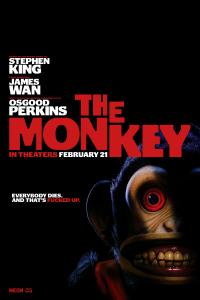Torrent details for "American Sign Language for Everyone" Log in to bookmark
Controls:
Language:
 English
EnglishTotal Size:
9.73 GB
Info Hash:
f41e18b8b28329fbab0494e063270368b36f2662
Added By:
Added:
27-04-2023 16:05
Views:
471
Health:

Seeds:
4
Leechers:
1
Completed:
441
Thanks for rating :
TheIndianPirate (5),
(5),
TheIndianPirate

Description
We all use signs and gestures in our daily communication, whether its nodding or shaking our head, waving to get someone’s attention, or other hand gestures and body language we employ to emphasize what we say. But for about 500,000 Americans, signs, gestures, facial expressions, and body movements are their primary form of communication. In American Sign Language for Everyone, Professor Julia Silvestri—a native user of American Sign Language (ASL) and member of the Deaf community—will show you how to use this unique language to meet people, share information about the world around you, express your opinion, and enjoy ASL literary forms.
In 24 engaging lessons, Dr. Silvestri will teach you the manual alphabet—the handshapes for all 26 letters used for fingerspelling proper names or English words you cannot yet sign—and dozens of other signs to enable you to converse using ASL and expand your ability to effectively communicate with those around you. During the lessons, you’ll have many opportunities to practice signing and then self-test your vocabulary, as well as to watch your professor in conversation with another signer. You can also review the lessons as often as you like to improve your fluency in this fascinating and powerful visuospatial language.
What Is American Sign Language?
ASL is a relatively new language, only about 200 years old. In the early years of the United States, various groups of people developed their own forms of sign language. However, nothing was standardized until Dr. Thomas Gallaudet brought Laurent Clerc, a Deaf teacher from France to the United States. In 1817, they established the school now called the American School for the Deaf. At that school, local and indigenous sign languages were mixed with French signs to become the new American Sign Language.
As you’ll learn in this course, ASL is:
American. ASL is uniquely American, used natively only in the United States and some areas of Canada. While English speakers can communicate easily in any English-speaking country, the same is not true for ASL. About 300 unique sign languages exist around the world and they differ greatly from region to region.
Sign. ASL users communicate with signs, gestures, facial expressions, and body language. The signs you will learn in this course will form a basic foundation for communication; thousands more are available as you expand your signing. The American Sign Language Dictionary contains about 40,000 signs and, like any spoken or written language, it continues to expand.
Language. ASL is a complete, natural language with the same linguistic properties as spoken languages—word formation, word order, grammar, and sentence structure. ASL is not a word-for-word translation of English. In fact, its only relationship to English is the occasional use of fingerspelled English words; but those words are technically not part of ASL. Like any language, ASL has regional accents, dialects, variations in rhythm, and slang.
New-to-You Language Terms
ASL and English are not at all similar. As Dr. Silvestri points out, one quick shortcut to thinking about those differences is to remember the character “Yoda” from the Star Wars films. While English typically follows subject-verb-object order, ASL grammar is more closely represented by Yoda’s speech patterns in which the object often comes first. In American Sign Language for Everyone, you’ll learn ASL grammar and syntax that differ from English, including:
Topicalization. This is a mechanism of syntax that brings the main topic up to the front of the sentence. English doesn’t use topicalization, but Japanese does. In ASL, topicalization helps create the “diamond shape” of communication—the topic is presented first in the top center of the signing space, followed by as many additional details as desired, and finally a question or restatement of the topic idea.
Role-Shifting. As the signer is presenting details and opinions related to the stated topic, they can use role-shifting, a grammatical device to indicate perspectives other than that of the narrator. This is achieved by body movement, eye gaze direction, and facial expressions. It’s also used in telling stories with multiple characters as a visual way of indicating who is speaking at a given moment.
Classifiers. Classifiers are handshapes that that give information about a previously presented topic. The different types of classifiers can indicate pronouns, movements, location, size, texture, and many other features.
Literary ASL
The lessons in this course are grouped into four sections: culture, conversation, community, and composition. In the first three units, you will learn about signs, introductions, and how to have conversations describing the world around you and your opinions. The final unit will introduce you to some of the most expressive and creative aspects of ASL.
Many linguistics experts believe signed languages are more expressive than spoken or written language. You will see those principles in action—as signs, full body movements, and a wide variety of dramatic facial expressions intuitively convey meaning that would require many additional words in English. You will learn about:
Storytelling. ASL lends itself to storytelling, with the signer adding meaning with body language and facial expression, layer upon layer. By using role-shifting, the storyteller can juggle many characters at once, indicating who is speaking and in what mood without having to use the attributions and descriptors that can sometimes slow down a story in English.
Visual Vernacular. Visual vernacular is a storytelling mechanism and sign-language art form that uses visually iconic sign language and body expression accompanied by mime. This form uses a greater number of generic signs and fewer signs that are specific to ASL, allowing meaning to be conveyed to anyone, whether the viewer knows ASL or not. It is a completely visual art form and has been compared to manga, video games, and performance art.
Poetry. ASL poetry serves the same function in the Deaf community as English poetry serves in the English-speaking world; we use it to teach our children from the youngest ages, express our concerns, and explore our feelings about the world. You’ll learn how to create poetry using the phonological parameters of handshape, movement, orientation, location, and facial expression.
In American Sign Language for Everyone, you will gain insight into the art forms of this expressive and powerful visuospatial language. You will also build a strong foundation in ASL to connect and communicate with members of the American Deaf community. A whole new world of expression will be open to you.
Released 3/2023










































